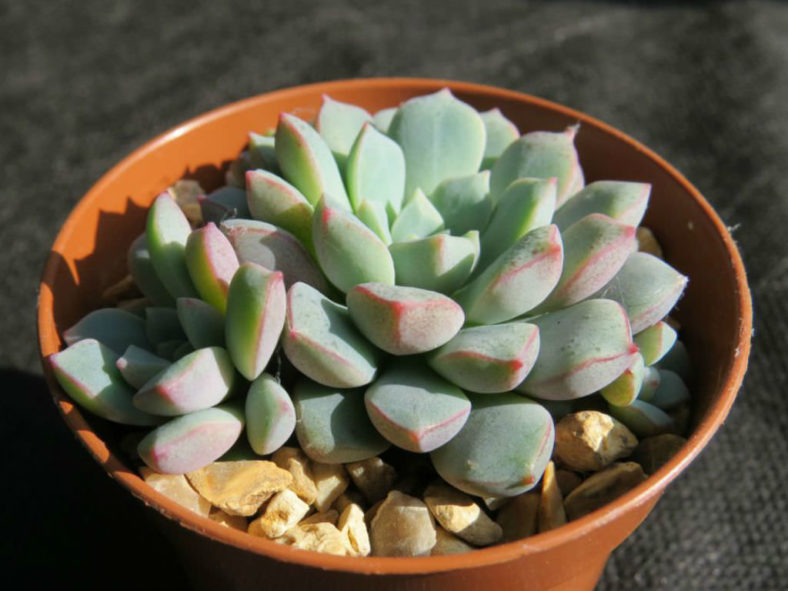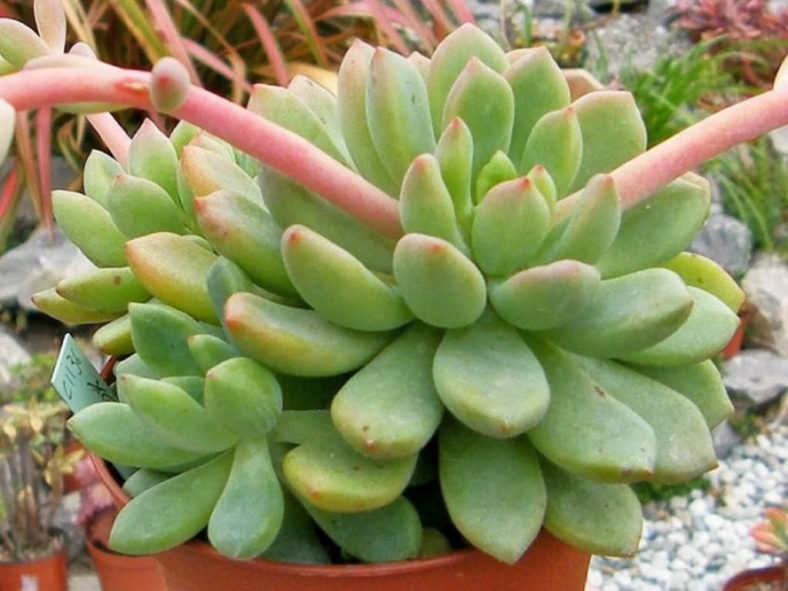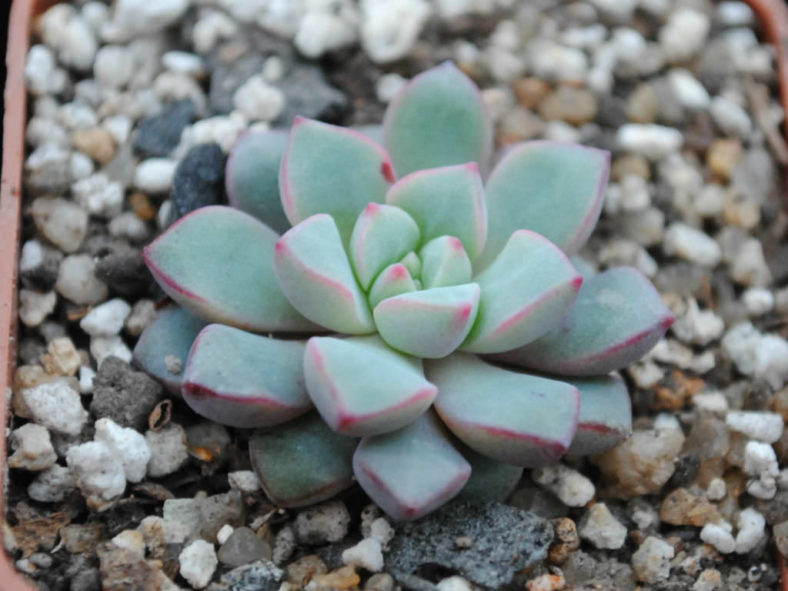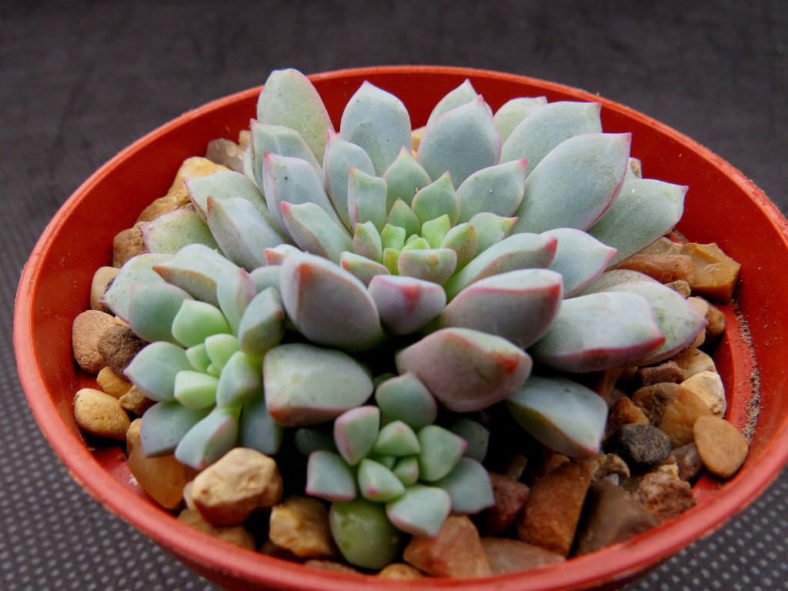Scientific Name
×Cremneria 'Expatriata'
Synonym(s)
×Cremneria expatriata, Echeveria expatriata, Echeveria × cochlearis, Echeveria cochlearis
Scientific Classification
Family: Crassulaceae
Subfamily: Sempervivoideae
Tribe: Sedeae
Nothogenus: ×Cremneria
Origin
×Cremneria 'Expatriata' is a hybrid that results from a cross between Cremnophila linguifolia and Echeveria amoena (formerly known as Echeveria microcalyx). It has generally been treated as a species. However, Reid Moran in 1975 published the new hybrid genus ×Cremneria for hybrids resulting from the cross between Cremnophila and Echeveria and indicated Echeveria expatriata as ×Cremneria 'Expatriata'.
Description
×Cremneria 'Expatriata' is a low-growing succulent with a stem crowned by a dense rosette of glaucous leaves and produces offsets on the bare part of the stem below. It can grow up to 4 inches (10 cm) tall. The leaves are narrow, pointed, oblanceolate, and can measure up to 1 inch (2.5 cm) long.
The pinkish, bell-shaped flowers appear in clusters on long, slender, leafy stalks, usually in spring.

Hardiness
USDA hardiness zones 10a to 11b: from 30 °F (−1.1 °C) to 50 °F (+10 °C).
How to Grow and Care
Most common Echeveria species are not complicated succulents to grow, provided you follow a few basic rules. First, never let water sit in the rosette, as it can cause rot or fungal diseases that will kill the plant. Additionally, remove dead leaves from the bottom of the plant as it grows. These dead leaves provide a haven for pests, and Echeverias are susceptible to mealy bugs. As with all succulents, careful watering habits and plenty of light will help ensure success.
Repot as needed, preferably during the warm season. To repot a succulent, ensure the soil is dry before repotting, then gently remove the pot. Knock away the old soil from the roots, removing any rotted or dead roots. Treat any cuts with a fungicide.
Most Echeverias can be easily propagated from leaf cuttings, although some are better from seeds or stem cuttings. To propagate a leaf cutting, place the individual leaf in potting soil for succulents and cover the dish until the new plant sprouts.
See more at How to Grow and Care for Echeveria.
Links
- Back to nothogenus ×Cremneria
- Succupedia: Browse succulents by Scientific Name, Common Name, Genus, Family, USDA Hardiness Zone, Origin, or cacti by Genus
Photo Gallery
Click on a photo to see a larger version.


